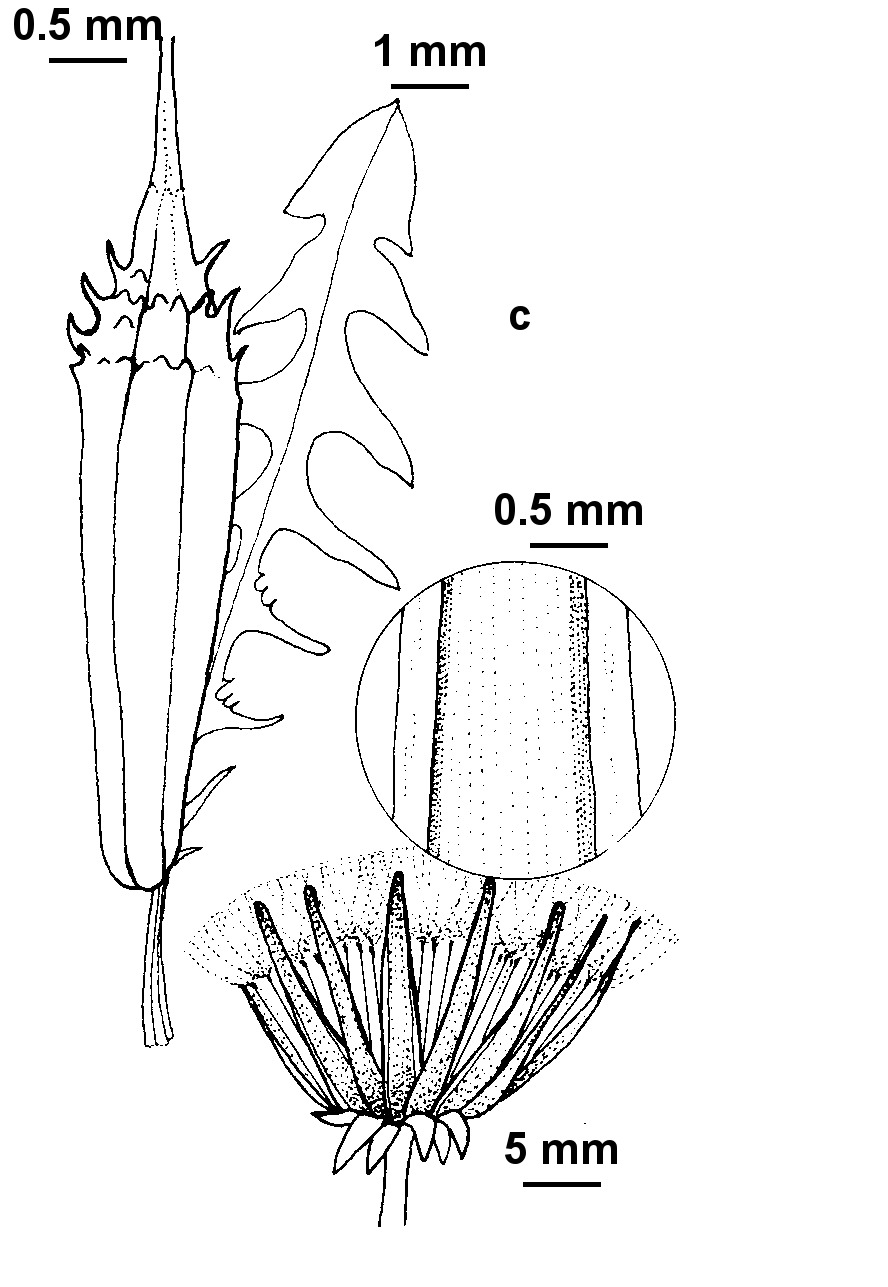Taraxacum squamulosum
Soest DandelionLeaves lanceolate to oblanceolate, 5–15 (–20) cm long, 15–30 (–60) mm wide, glabrous; lateral lobes in 3–7 pairs, deltate, often caudate, sometimes narrow and falcate, with distal margins of upper 2 to 3 lobes entire or with 1–3 teeth or acute lobules, proximal margins entire or with 1 acute lobule; petiole rose-purple, sometimes narrowly winged. Scapes 5–18 cm long at anthesis, 10–30 cm long in fruit. Capitula 3.5–4.5 cm diam.; outer bracts cordate to ovate-lanceolate, 4–7 mm long, 2–4 mm wide, erect, erecto-patent to slightly recurved, with white borders 0.3–0.5 mm wide, marginally ciliolate or rarely smooth, apiculate, with tips thickened to minutely callose; innermost bracts linear, 10–15 (–20) mm long, 1–2 mm wide, usually minutely callus-tipped. Outer ligules flat, exceeding involucre by 5–10 mm; anthers with pollen; stigmas greenish-yellow. Cypselas broadly fusiform, 3–5 mm long, c. 1 mm wide, light pinkish brown to grey, with prominent broad scale-like spines at apex, smooth in lower third at least; cone cylindrical, sporadically also conical, (0.5–) 0.8–1.0 mm long; beak 6–7 mm long; pappus 5–7 mm long. Flowers Sept.–Apr.
Wim, GleP, VVP, GipP, WaP, Gold, CVU, DunT, NIS, EGL, EGU, HSF, HNF, Strz. Native to Corsica in Europe. Grows mainly in native grassy forest and woodland from sea-level to sub-alpine regions, frequently in gullies and on riparian flats and scattered through the suburbs of Melbourne.
Stepanek and Kirschner (2012) reduced T. squamulosum to synonymy under T. oxoniense Dahlst ex Druce. However, since T. oxoniense lacks the characteristic squamulose achenes of T. squamulosum, this name is here treated as distinct.
 Spinning
SpinningSynonyms
Stepanek, J.; Kirschner, J. (2012). A taxonomic revision of Taraxacum sect. Erythrosperma (Compositae-Lactuceae) in Corsica. Feddes Repert. 123(2): 139–176.

